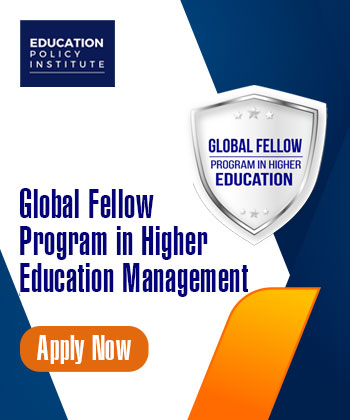Artificial Intelligence is changing the way we interact with technology, from algorithmic recommendations on platforms for streaming to AI-powered assistants on phones. Artificial Intelligence is being used in education to improve student outcomes and experiences. In this context, ChatGPT, an effective language model created by OpenAI, is one well-known AI tool. This blog will discuss the benefits and drawbacks of utilizing artificial intelligence (AI), specifically ChatGPT, in education and how it affects the results of students.
Artificial Intelligence in Learning
Due to developments in technology and the incorporation of artificial intelligence, the conventional system of education is going through a remarkable transformation. The term EdTech, or education-related technology, refers to a broad category of applications that include intelligent tutoring systems and personalized learning platforms. It promises more customized and productive learning opportunities.
The Advantages of Using AI in Learning
The integration of Artificial Intelligence (AI) in learning environments has brought several benefits, transforming the educational landscape. Here are some key advantages of using AI in learning:
- Personalized Learning: By analyzing a student's strengths and weaknesses, artificial intelligence (AI) can create activities and materials that are specifically tailored to each student, more effectively meeting their needs.
- Time and Cost Efficiency: Teachers can concentrate on teaching by saving time and money by automating administrative tasks and grading.
- Greater Engagement: For students who are drawn to digital interfaces, in particular, interactive AI-driven content like ChatGPT in education can increase learning engagement.
Challenges of Using AI in Learning
Although artificial intelligence (AI) has great potential to improve learning, there are some challenges as well.
- Data Safety: The gathering and utilization of students' data for AI purposes raises privacy and security concerns.
- Equity: Since not every student has equal access to technology and the internet, accessibility to AI-driven learning tools may not be equitable.
- Teacher-Student Relationships: AI will never be able to completely replace the human component of education, which is essential for interpersonal skills development, emotional support, and mentoring.
- Over-reliance: If students rely too much on AI tools, it could impair their capacity for independent problem-solving and critical thought.
What Is ChatGPT and How Does It Work?
OpenAI created the language model ChatGPT. It belongs to the GPT-3 family of models and is made to generate text responses that mimic those of a human that depend upon the input it gets. To understand and create text that is logical and within the context, ChatGPT uses a huge amount of written material from the web.
Advantages of Using ChatGPT in Learning
ChatGPT provides many benefits that help in fostering student engagement contributing to a more dynamic and efficient learning process. Here are some advantages:
- Instant Assistance: ChatGPT in education can improve students' learning experiences by giving them prompt answers to inquiries.
- Accessibility: ChatGPT is a great tool for students who need assistance after regular class hours because it is available around the clock.
- Language Support: ChatGPT can help students become more proficient in vocabulary, grammar, and writing.
- Exam Preparation: Offering clarifications on complex ideas and answers to questions, can assist students in getting ready for tests.
- Discerning New Topics: ChatGPT encourages students to delve deeper into their interests by offering knowledge and perspectives on lots of topics.
Limitations of Using ChatGPT in Learning
Using ChatGPT in learning has limitations, such as inaccurate or misleading information, lack of critical thinking, and potential reinforcement of incorrect concepts. Additionally, ChatGPT might not fully replace human educators in addressing complex emotional or nuanced aspects of learning.
- False information: Information generated through the model might not always be correct or updated.
- Absence of Critical Thinking: Students who only use ChatGPT for assistance may be discouraged from growing their critical thinking abilities.
- Ethical Issues: Since ChatGPT occasionally generates offensive or inappropriate content, it poses ethical issues in educational settings.
- Limited Expertise: ChatGPT's knowledge of certain topics may be narrow, and it may respond to difficult queries superficially.
The Ethical Considerations of Using AI in Learning
Regarding data privacy, bias, and equity, artificial intelligence raises ethical questions. Protecting student privacy requires careful management and protection of their data. Impeded student groups may be disadvantaged by ChatGPT in education which carries over biases from training data. To avoid educational inequalities, it is imperative to guarantee fair access to AI tools for all students, irrespective of their financial status. A complicated ethical problem that needs considerable thought is who is responsible for decisions and content produced by AI. Responsible AI implementation in learning environments requires weighing the benefits of AI in education against these ethical dilemmas.
The Future of AI in Learning: Opportunities and Challenges
AI in education has a bright future, but it also presents challenges. Learning experiences could be greatly enhanced as AI technology develops. But it's crucial to address the privacy, equity, and ethical issues that come with integrating AI into education. The secret to the successful implementation of AI in education is striking the correct balance between using its advantages and maintaining the human element.
Conclusion
As a result, AI—which includes programs like ChatGPT—has the potential to improve student learning outcomes and increase accessibility and interest in learning. But it's crucial to take caution while implementing it, considering the ethical, privacy, and equity consequences.





